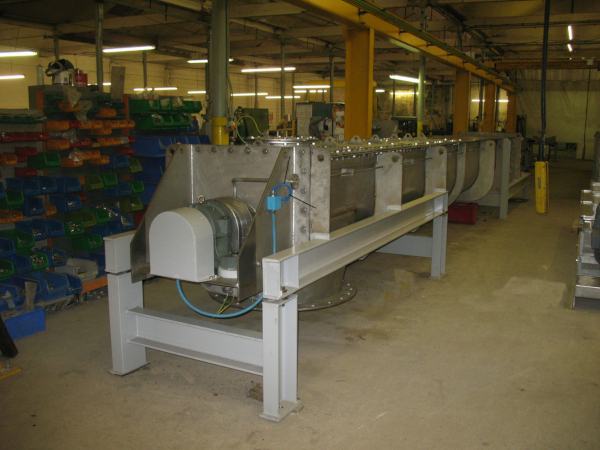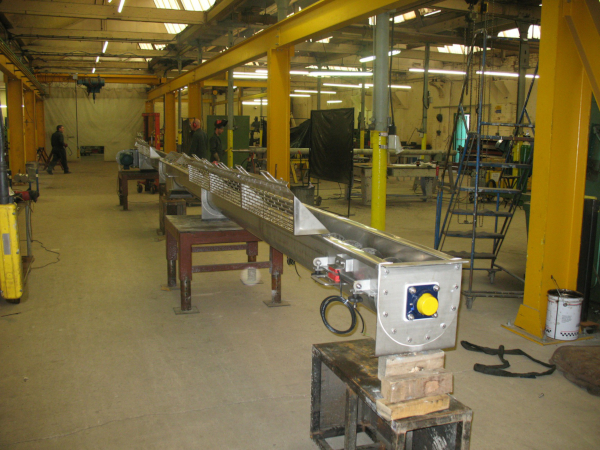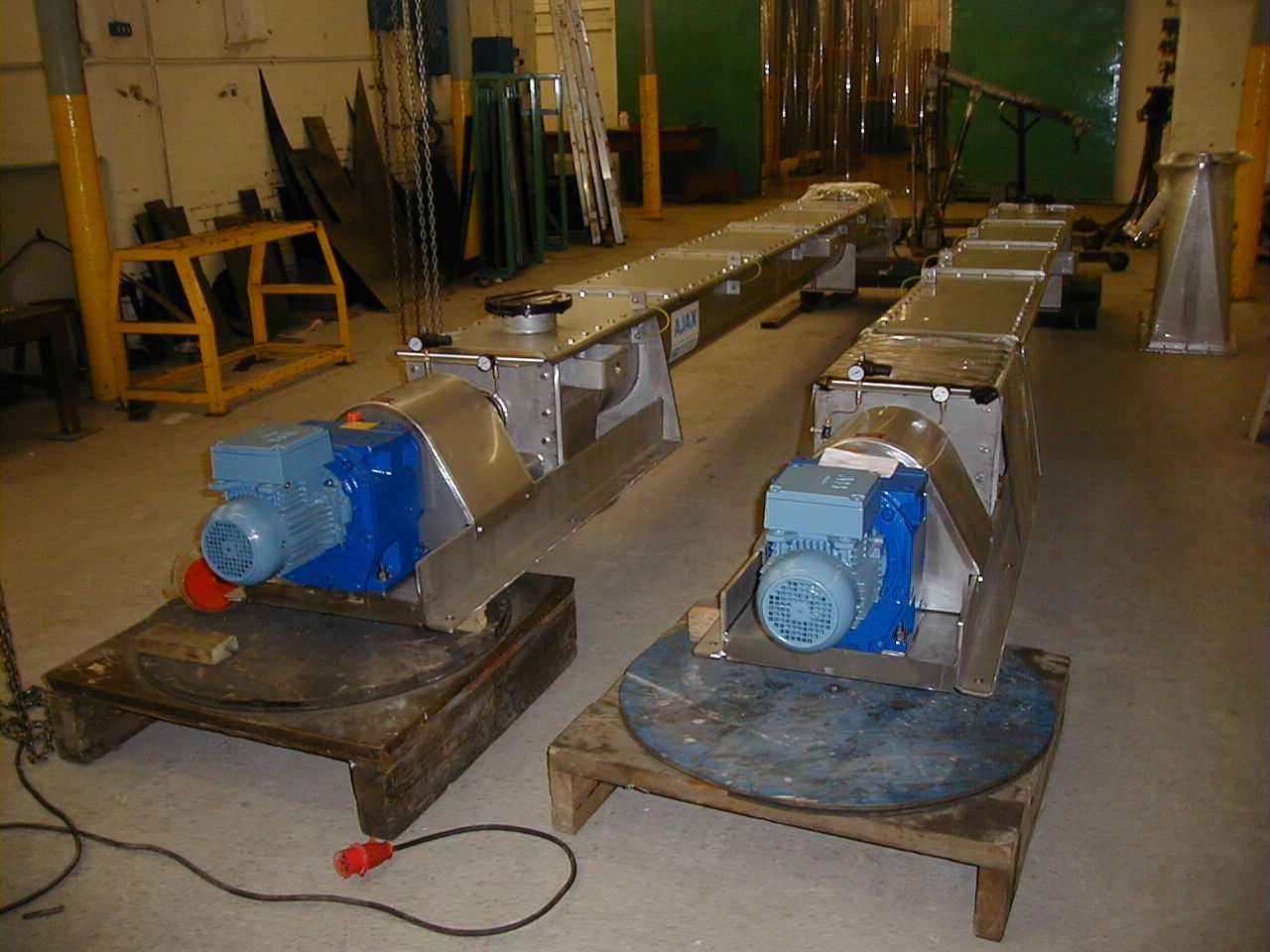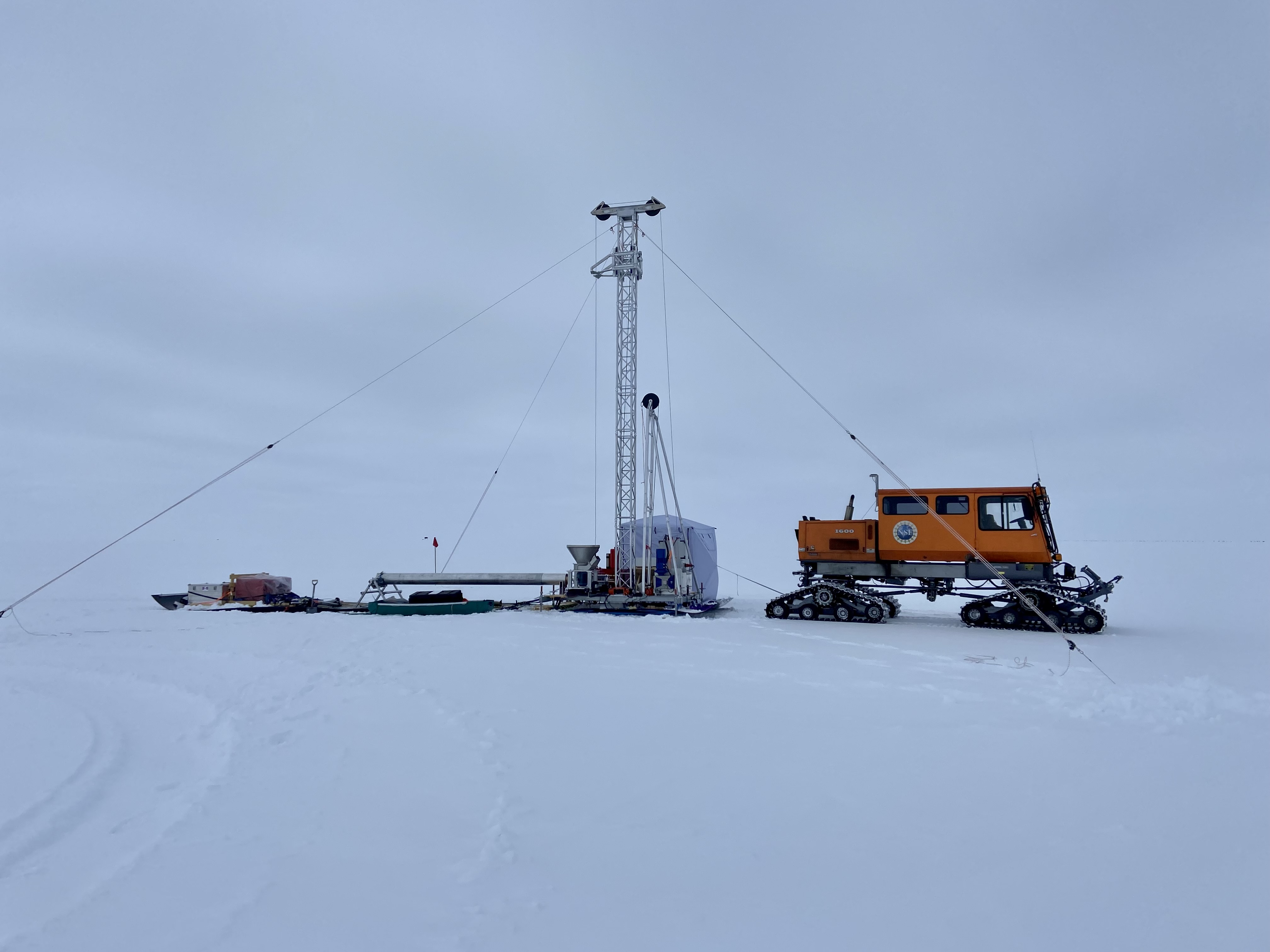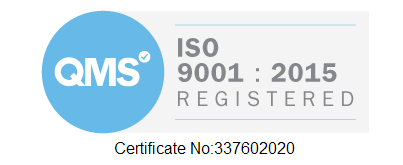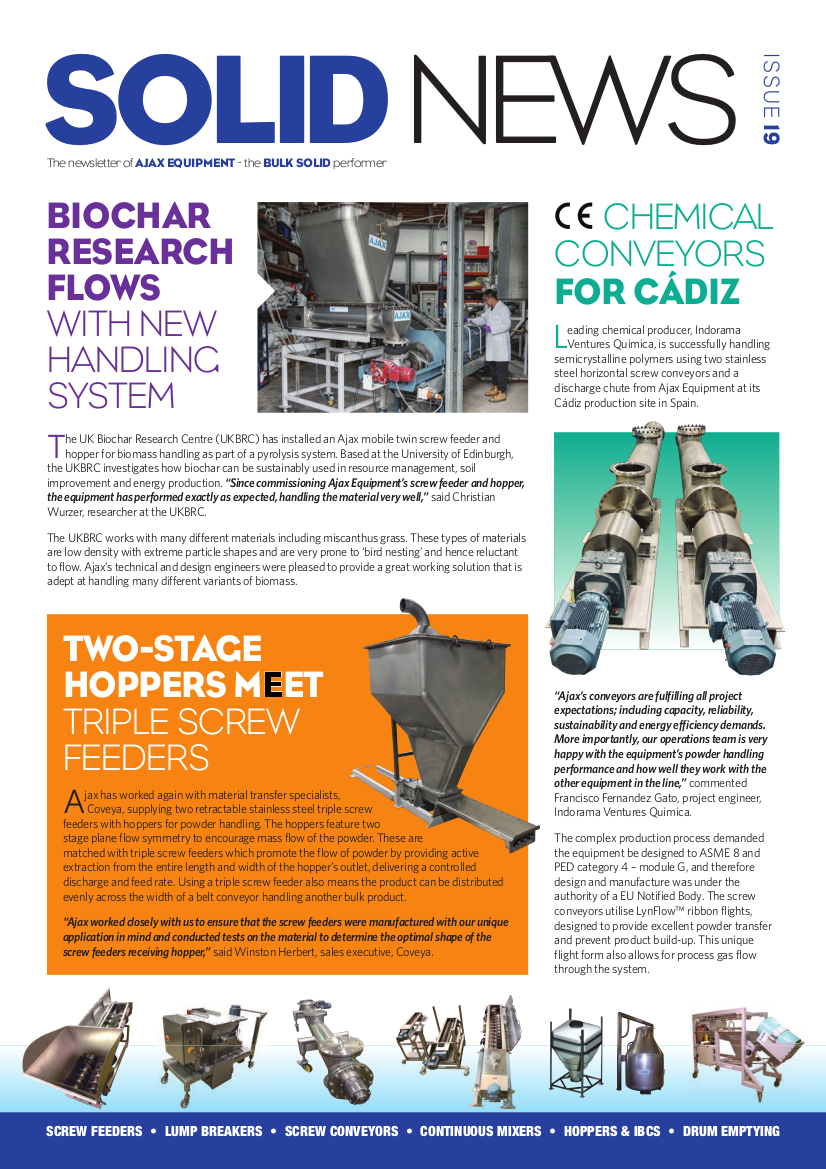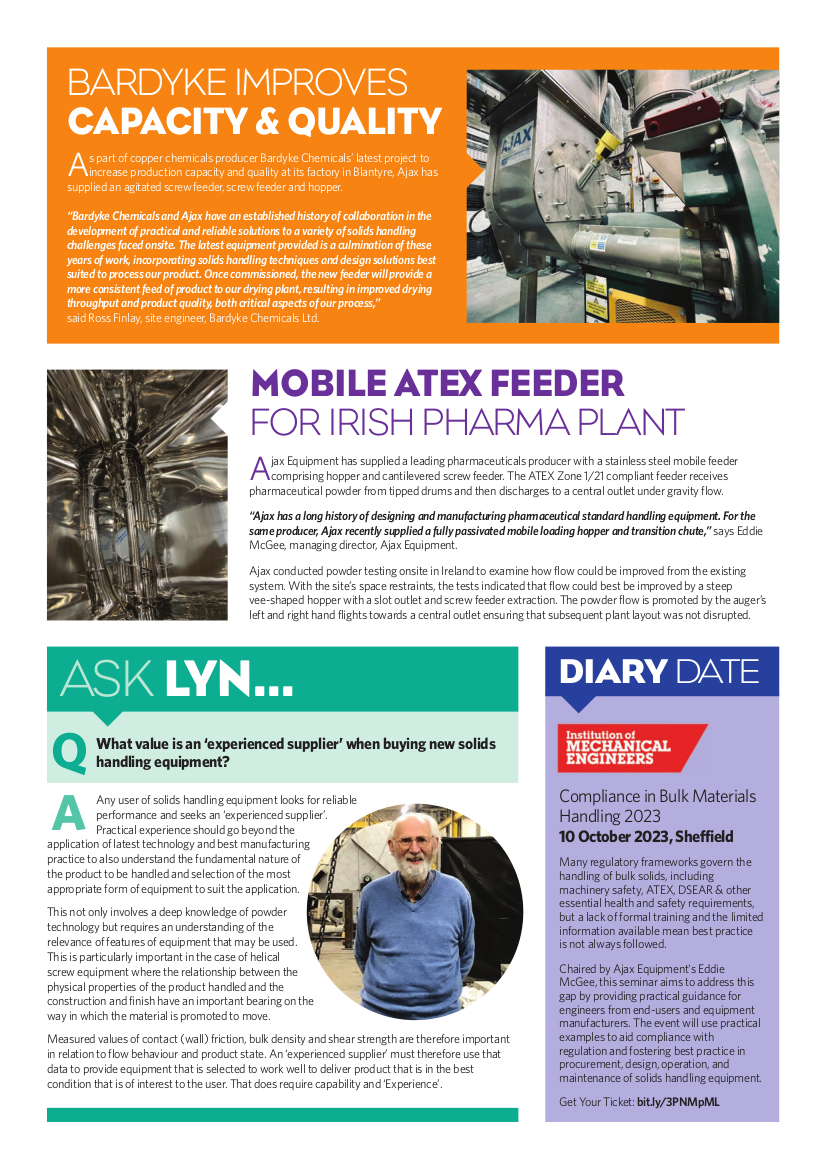AJAX Extended Length Conveying
Long screw conveyors are particularly challenging to manufacture and ensure they run smoothly. Ajax Equipment recently completed a 28m long screw conveyor, its longest conveyor to date. Here Ajax technical director Eddie McGee considers the issues involved in manufacturing the conveyor.
Screw Conveyors
In the broadest sense, there are three different modes of screw conveying: elevators, feeders and conveyors. Elevators operate under dynamic mode, feeders flooded mode and conveyors under gravity mode.
All helical screws operate on the same fundamental basis; the screw transports loose solids through the rotation of an inclined face that pushes the bulk solid forward, providing a very positive means of transfer. This compares favourably with, say, a belt or vibratory conveyor where the material sits passively on the belt. A poorly performing belt conveyor can have an adverse effect on plant productivity. For example, an inclined belt conveyor handling a wet gel product experienced problems due to fall back and spillage. By replacing it with a 6m conveyor with Lynflow ribbon screw flights, it was able to positively transfer the gel without running the risk of clogging or overworking. In this way Ajax Equipment was able to increase the plant's Overall Equipment Effectiveness (OEE) dramatically from 55% to 76% OEE.
A screw conveyor works well horizontally or on a gentle incline and should normally not have a cross-sectional load above 45 percent fill. If material fill exceeds the height of the centre shaft, material can tumble back into the preceding pitch space causing a 'cascade effect' as material effectively moves backwards to the fill point. Therefore reducing the effectiveness of flow of the material in the conveyor.
Long Conveyors
In designing a long conveyor not only do the basic dos and don'ts of screw conveyors apply but even more so. Operating a screw efficiently is common sense and following a few simple rules can prevent most problems such as avoiding putting a new material into a screw before assessing how it will behave; and ensure that the material will not jam the screw, causing resistance and potentially damaging the screw.
Any materials that have a tendency to cake or set, and become unmovable in the machine, should be avoided, unless a rigorous and complete clean out is possible before any adverse effects are encountered. Even if the material can be removed from the screw, the resistance incurred by the screw and its peripheral sweep to any residue lining the casing can cause wear and large torque demands. Of course, it is essential to ensure the outlet remains unobstructed whatever material is handled as this too risks damaging the screw.
Finally if the incline of a screw needs to be greater than 25-30 degrees seek the advice of an expert otherwise it is likely that the material will not be handled effectively.
Following these rules will help with the design, manufacture and efficient running of a screw in most cases, but what happens if you need to transport material over an unusually large distance?
Screw conveyors up to 6m can be accommodated without internal hanger bearings - and these units inclined say to 20 - 30 degrees. Conveyors with a span over six meters often require internal hanger bearings at regular intervals to support the screw and prevent sagging. Each screw segment needs to be aligned well to prevent excessive loading in use and the screw properly supported to avoid excessive bending stress and catching the casing. From a control perspective it is best to have the drive at one end, and of course the screw shafts need to be able to handle significant torque.
The hanger bearings are often only used on screws that are close to horizontal; however, they can be a serious impediment to flow. Special care should to be taken to prevent a reduction in flow by ensuring that the hanger, bearing and flights work together. One-way to achieve this is to optimise the hanger bearing and flight designs in the vicinity of the bearing. Selection of bearing bush material is important and can be quite varied nowadays particularly with availability of reinforced dry running PTFEs instead of say phosphor bronze; careful design will ensure the bearing bush lasts a long time.
For food processing, hygienic designs for long conveyors are possible with fabricated supports in place of screw rods. Indeed these can be used to offer not only hygienic design but also reduce the obstacle effect and offer enhanced rigidity of support.
For more information on Ajax’s screw conveyors, call +44 (0)1204 386723 or visit our
Screw Conveyor page.

